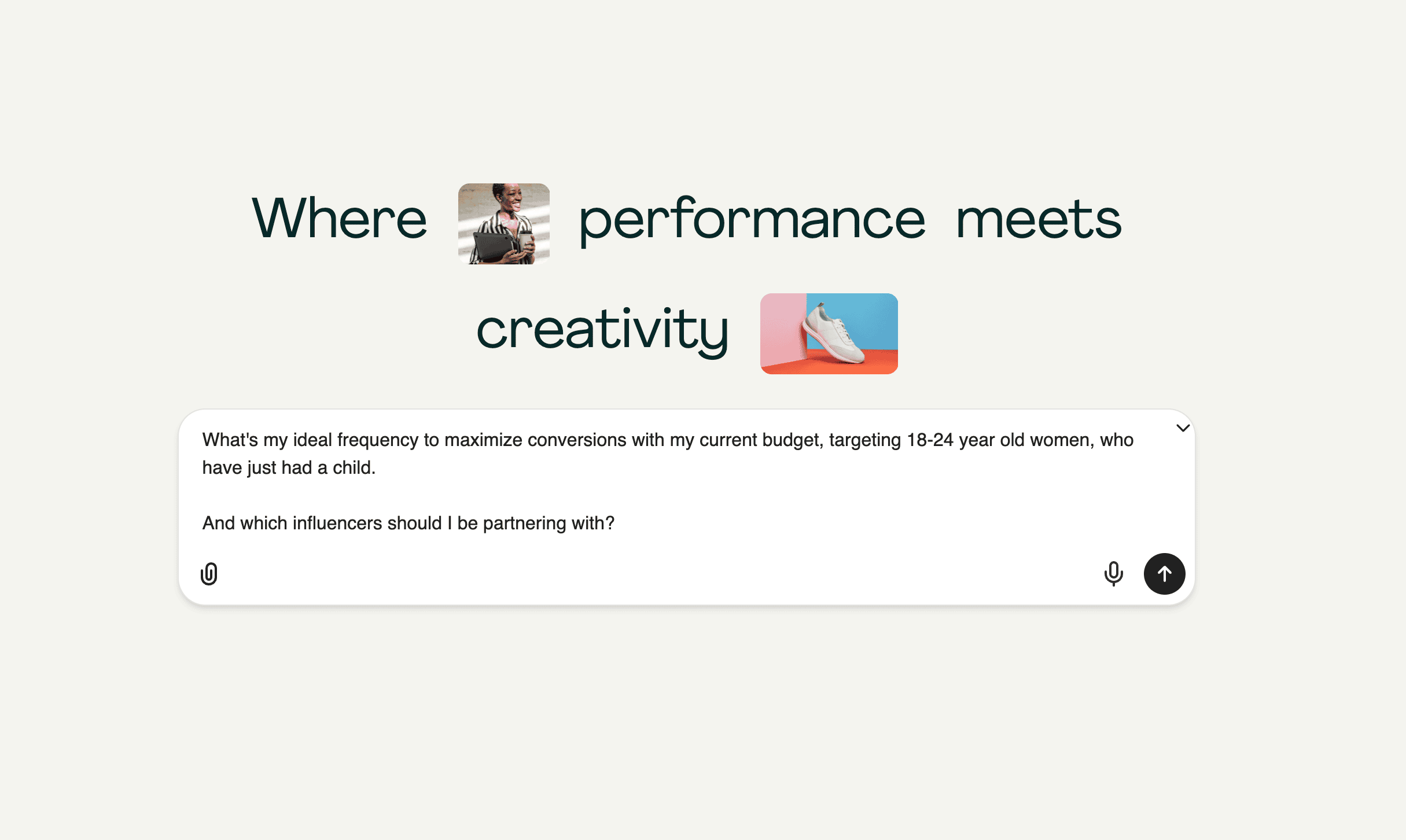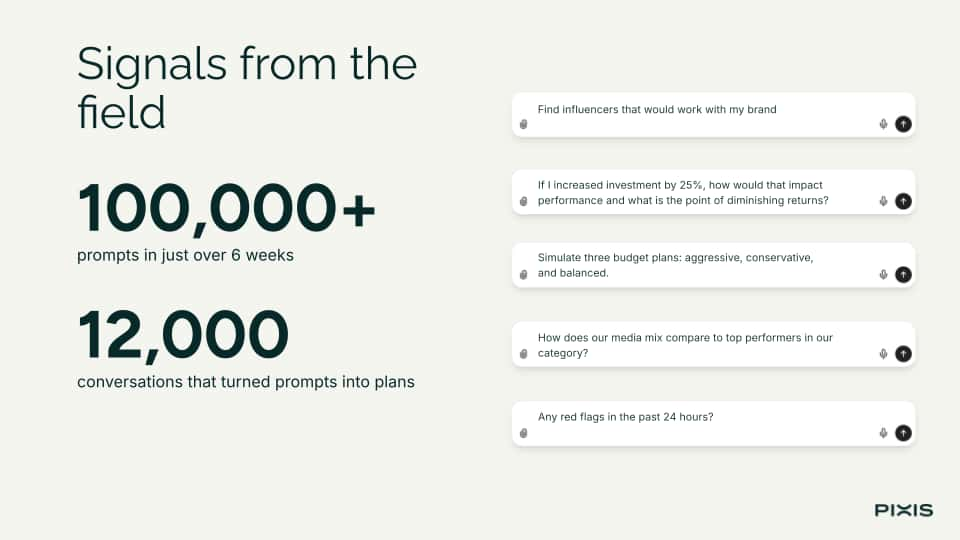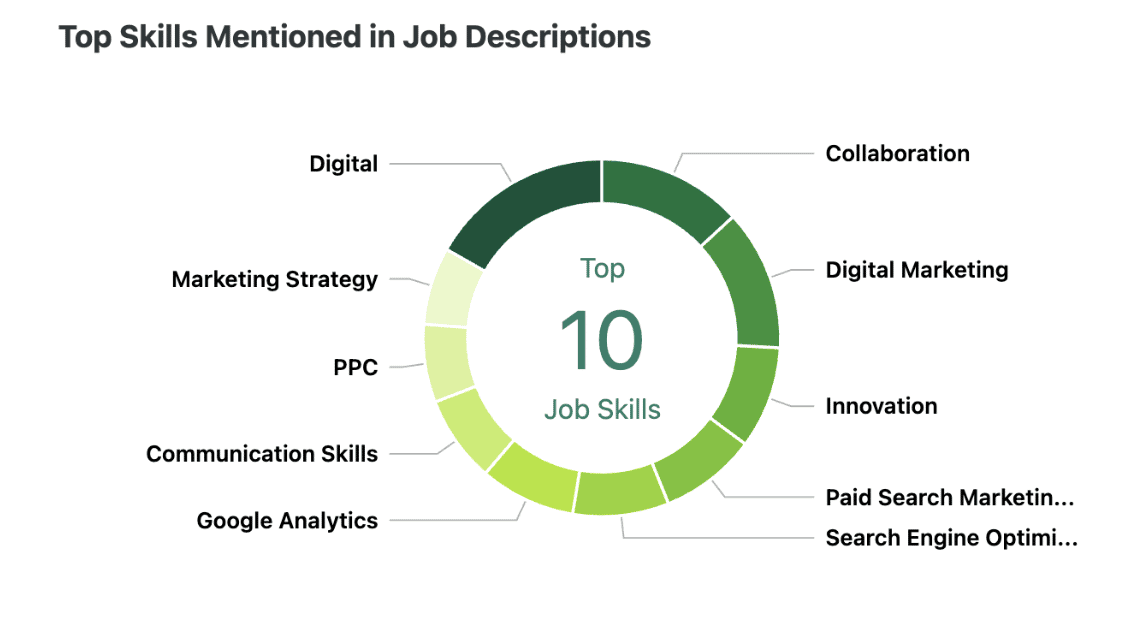Marketers were never supposed to be systems integrators. But that’s what the job has become:
- Switching between tools
- Pulling dashboards
- Exporting data
- Reconciling disconnected data
- Digging out insights manually
- Shuffling those insights to another system again, manually
That. Isn’t. Marketing.
We set out to build adtech stacks that could work for us, and we ended up working for them.
We all know it: between the pile of SaaS vendors and the ad platforms, we’re dealing with a real mess.
That complexity has real costs:
- Phantom cost: Context switching, and the extra hours it takes to answer questions that should be simple.
- Opportunity cost: The creative, strategic work that’s not getting done because the team is spending time filling gaps between systems, or just guessing due to lack of real insight.
- Adtech costs: More tech to try to plug the holes, more money spent on integrations that then require more maintenance.
These costs make efficient growth next to impossible. It forces marketers to become miracle workers, or just get really, really lucky.
Call me an idealist, but I believe your adtech stack shouldn’t require you to work more
I believe it’s possible to get marketers back to doing real marketing.
To get out from under the endless data shuffling, spreadsheets, different reports and inaccessible data. To return marketers to spending their days using their creativity, empathy, wisdom, curiosity and passion.
Clear ROI and freedom of creativity. You can have both.
What we’re building
It’s called Prism, and it’s an AI-native marketing operating system.

It’s designed to replace passive dashboards and point automation with real-time, role-aware decision execution.
And even though it’s just in beta, it’s already doing that:

The early usage is incredible!
Marketers who are deeply experienced with ChatGPT using it to do analysis they couldn’t dream of doing with an LLM like ChatGPT or Claude…
Right alongside marketers who have never used an LLM, getting the very same result. Just by following their intuition, creativity and curiosity.
We don’t want to replace your entire martech stack. We don’t think we’re going to become your sole source of truth. That’s every other SaaS vendor’s strategy, and it’s clearly not working for marketers.
Instead, we want to give you a way to use everything already in your martech stack to its fullest potential without:
- Worrying about creating a single source of truth
- Switching tabs every five minutes
- Exporting CSVs
- Waiting
Right now, we’re in beta with some select partners, agencies and customers.
But we’ll be opening up for general availability soon. Reach out to our Chief Business Office, Hari Valiyanth, if you want to get access now.
Same direction, new execution
This actually isn’t a new idea.
For years, I’ve been obsessed with the idea that AI could help marketers collect insights and take actions across all of their various systems without logging into a lot of different tools.
That’s actually where the idea of Pixis came from - the idea that this market needed somebody to help remove the unnecessary friction.
You may know that Amazon writes press releases to describe future states of projects to decide whether to do them in the first place at all. We do something similar: we create demo videos.
Here’s the one we created for Prism two years ago:
Obviously a lot has changed since then. That video uses our old brand, and some of the messaging is different. We’re envisioning a few of the capabilities differently, too.
But we’re also moving far faster, and with a lot more clarity and confidence.
We were on the right track then, and we have more reason to think so now. We’ve got a new version of this, executed in a different way, in beta right now with many of our customers.
I looked at my call recordings from last week and found a few quotes from early users that stood out.
This is exactly where you should be going. It’s very cool, but I’m terrified at the same time.
It’s really compelling. Everybody has access to LLMs. That’s not where the value is. The differentiator is what you’re able to get out of it. What you guys are doing is exactly the path we’d want to head down long-term.
Phenomenal. Just phenomenal. I’d love to integrate with this. It’s crazy this is as tight as it is.
I’m energized! We’ve found a new ability to execute on a vision we’ve always felt compelled to build. And early user feedback is putting even more fuel on our fire.
Questions & Answers On My Mind
What’s under the hood of Prism?
We’ve taken a big step of going all in on Model Context Protocol (MCP). It’s a new technology: just a few months old, but we’ve made it part of the core of how we deliver our product experience.
It means Prism functions as a shared intelligence layer across marketing, finance, and strategy. That means all of your data becomes directive, not just descriptive. It listens, learns, and acts across all your tools and teams, helping organizations move from insight to orchestrated action in minutes, not weeks.
We can’t do everything. What are we deprioritizing?
Everything that doesn’t compound toward this refined product vision.
That doesn’t mean we’re shutting down revenue lines. We still have budget optimization products that deliver incredible results for our customers. But we are ruthlessly aligning product, engineering, and go-to-market efforts to our new beta.
The clarity is freeing. It helps us move faster, ship more focused products, and stay true to what makes this bet worth making in the first place.
And of course we’re working towards building all of the budget optimization capabilities directly into Prism as well.
What would it look like if we didn't bet big on Prism, played it safe instead?
We’d get disrupted. Maybe not this quarter, or this year, but very soon.
Somebody is going to build a single, AI-powered, decision and execution layer for marketers. And we have an incredible edge: a headstart, speed on our side, amazing talent, and custom AI models trained specifically on performance marketing data.
So better us than anybody else.
And if we weren’t building this, we’d still be optimizing ad workflows, competing on feature checklists, and selling incremental ad spend efficiency.
But that’s not actually what our customers need. They need a bigger transformation of how they work. They need to get out of the rock-and-the-hard place position the last SaaS wave and rise of the digital ad platforms put them in.
What does this approach say about our culture and how we execute at Pixis?
It says we build with conviction, and we don’t just respond to market noise. We anticipate structural shifts and go all-in when we see them.
Anyone can build AI features. Very few can build foundational architecture.
This is who we’ve always been:
- Vision-led, but execution-obsessed.
- Willing to take uncomfortable bets.
- Committed to solving the real problem, not the visible symptom.
We don’t want to build a nice SaaS company. We want to change what marketing looks like.
What will a marketer's world look like when they use and rely on Prism daily?
They’ll stop being tool operators and start being thinkers again.
They’ll use their innate and uniquely human skills: curiosity, empathy, creativity. They’ll rely on first-principles thinking, wisdom, and spend their time being more attuned to strategy.
Prism will let them:
- Ask complex questions and get strategic answers in seconds.
- Launch campaigns directly from insights.
- Connect customer data, product inventory, ad performance, and creative feedback loops without middleware.
More importantly, it gives them back time. Time for creative work, empathy, and experimentation. For the passion and energy it takes to build brands that feel human again.
The job will no longer be about knowing how to operate the stack. It will be about knowing what to ask and how to think and letting AI handle the toilsome tasks of putting the best ideas into action.
That’s how we bring back the joy, the edge, and the impact in marketing.
Just look at the skills most marketers talk about in their resumes:

(from ziprecruiter)
Where’s the joy in that?
Strategy is a tiny slice of that pie. It shouldn’t be that way. The rest is essentially a list of tactics, channels and tools. That’s not what makes a marketer.
I expect we’ll see less of that and more of: strategy, first-principles thinking, strategic questioning, innovation, collaboration, creativity, empathy, systems thinking, holistic strategy, customer empathy, etc.
What would you say to a fellow CEO considering going all-in on a bet like this one?
If you’re thinking about it, you probably already know the answer.
Ignore the fear. Ignore the comfort of your current revenue base. If you see the shift, you owe it to your team, your customers, and your future to commit.
The riskiest thing we could do right now is not build Prism. Not because it’s not a scary thing to do. It is. It’s just scarier to play it “safe”.
So we’re not hesitating. We’re betting the company — because we’d rather lead the next wave than survive the last one.
